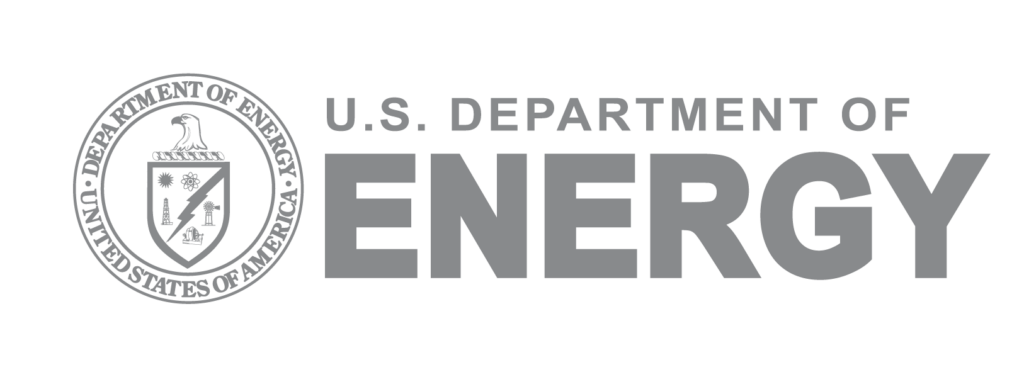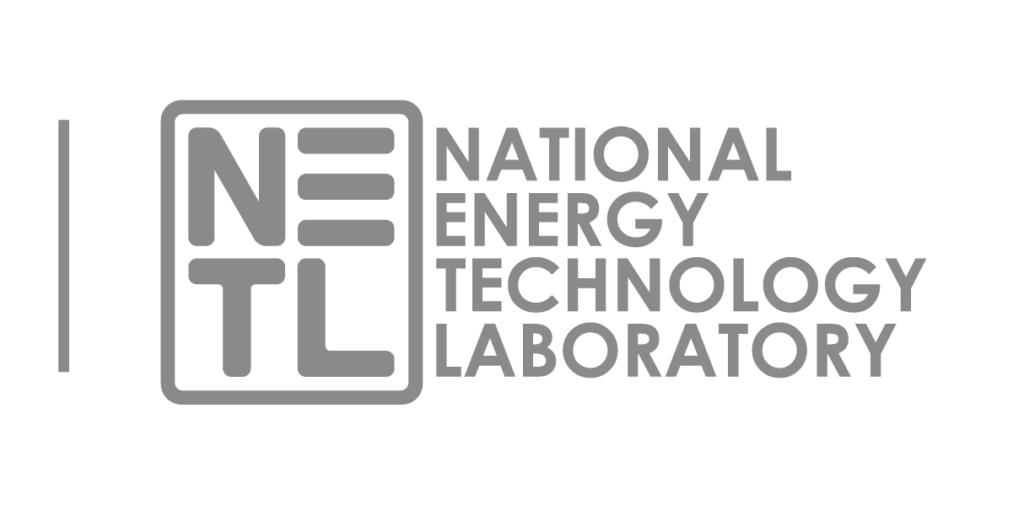Chai, C., Kintner, J.A., Cleveland, K.M., Luo, J., Maceira, M., and Charles J. Ammon, C.J., “Automatic Waveform Quality Control for Surface Waves Using Machine Learning,” Seismological Research Letters, 93(3), 1683-1694, (2022) https://doi.org/10.1785/0220210302.
disCO2ver
Unlocking data-driven capabilities for the entire CCS community
Home » Bibliographies
Bibliographies
Automatic Waveform Quality Control for Surface Waves Using Machine Learning
NRAP-Open-IAM: Generic Aquifer Component Development and Testing
Bacon, D. H. NRAP-Open-IAM: Generic Aquifer Component Development and Testing. PNNL-32590, 2022, Pacific Northwest National Laboratory, Richland, WA. https://doi.org/10.2172/1845855.
Machine Learning Enhanced Seismic Monitoring at 100 km and 10 m Scales
Chai, C., Maceira, M., and EGS Collab Team, “Machine Learning Enhanced Seismic Monitoring at 100 km and 10 m Scales,” in Proceedings, 47th Workshop on Geothermal Reservoir Engineering, edited, Stanford University, Stanford, California, 47, 635–645, (2022) https://www.osti.gov/biblio/1845768.
Sensitivity of geophysical techniques for monitoring secondary CO2 storage plumes
Gasperikova, E.; Appriou, D.; Bonneville, A.; Feng, Z.; Huang, L.; Gao, K.; Yang, X.; Daley, T. Sensitivity of geophysical techniques for monitoring secondary CO2 storage plumes. International Journal of Greenhouse Gas Control 2022, 114, Article 103585. https://doi.org/10.1016/j.ijggc.2022.103585.
Scaling Behavior of Thermally Driven Fractures in Deep Low-Permeability Formations: A Plane Strain Model with 1-D Heat Conduction
Chen, B.; Zhou, Q. Scaling Behavior of Thermally Driven Fractures in Deep Low-Permeability Formations: A Plane Strain Model with 1-D Heat Conduction. Journal of Geophysical Research – Solid Earth 2022, Research Article. https://doi.org/10.1029/2021JB022964.
Distilling Data to Drive Carbon Storage Insights
Morkner, P.; Bauer, J.; Creason, C.; Sabbatino, M.; Wingo, P.; Greenburg, R.; Walker, S.; Yeates, D.; Rose, K. Distilling Data to Drive Carbon Storage Insights. Computers & Geosciences 2022, 158, Article 104945. https://doi.org/10.1016/j.cageo.2021.104945.
Deep Learning Inversion of Gravity Data for Detection of CO2 Plumes in Overlying Aquifers
Yang, X.; Chen, X.; Smith, M.M. Deep Learning Inversion of Gravity Data for Detection of CO2 Plumes in Overlying Aquifers. Journal of Applied Geophysics 2022, 196(104507). https://doi.org/10.1016/j.jappgeo.2021.104507.
A Review of Well Integrity Based on Field Experience at Carbon Utilization and Storage Sites
Iyer, J.; Lackey, G.; Edvardsen, L.; Bean, A.; Carroll, S.A.; Huerta, N.; Smith, M.M.; Torsaeter, M.; Dilmore, R.M.; Cerasi, P. A Review of Well Integrity Based on Field Experience at Carbon Utilization and Storage Sites. International Journal of Greenhouse Gas Control 2022, 113(103533). https://doi.org/10.1016/j.ijggc.2021.103533
A Review of Well Integrity Based on Field Experience at Carbon Utilization and Storage Sites
Iyer, J.; Lackey, G.; Edvardsen, L.; Bean, A.; Carroll, S.A.; Huerta, N.; Smith, M.M.; Torsaeter, M.; Dilmore, R.M.; Cerasi, P. A Review of Well Integrity Based on Field Experience at Carbon Utilization and Storage Sites. International Journal of Greenhouse Gas Control 2022, 113(103533). https://doi.org/10.1016/j.ijggc.2021.103533
Development of Machine Learning Models for Full Field Reservoir Characterization
Wu, X., Shih, C., Mark-Moser, M., and Wingo, P., 2021. Development of machine learning models for full field Reservoir Characterization. AGU Fall Meeting 2021, Dec. 13-17, New Orleans, LA/Virtual. Session H34D – Application of Multimodal Physics-Informed Machine Learning/Deep Learning in Subsurface Flow and Transport Modeling. https://www.osti.gov/servlets/purl/1846178
Transient evolution of permeability and friction in a slowly slipping fault activated by fluid pressurization
Cappa, F.; Guglielmi, Y.; De Barros, L. Transient evolution of permeability and friction in a slowly slipping fault activated by fluid pressurization. Nature Communications, 2022, 13, 3039 (2022). https://doi.org/10.1038/s41467-022-30798-3.
Rules and Tools Crosswalk: A Compendium of Computational Tools to Support Geologic Carbon Storage Environmentally Protective UIC Class VI Permitting
Lackey, G.; Strazisar, B. R.; Kobelski, B.; McEvoy, M.; Bacon, D. H.; Cihan, A.; Iyer, J.; Livers-Douglas, A.; Pawar, R.; Sminchak, J.; Wernette, B.; Dilmore, R. M. Rules and Tools Crosswalk: A Compendium of Computational Tools to Support Geologic Carbon Storage Environmentally Protective UIC Class VI Permitting; NRAP-TRS-I-001-2022; DOE.NETL-2022.3731; NETL Technical Report Series; U.S. Department of Energy, National Energy Technology Laboratory: Pittsburgh, PA, 2022; p 120. DOI: https://doi.org/10.2172/1870412
Applied machine learning model comparison: Predicting offshore platform integrity with gradient boosting algorithms and neural networks
Dyer, A.S., Zaengle, D., Nelson, J.R., Duran, R., Wenzlick, M., Wingo, P.C., Bauer, J.R., Rose, K., and Romeo, L. (2022). Applied machine learning model comparison: Predicting offshore platform integrity with gradient boosting algorithms and neural networks, Marine Structures, Volume 83, 103152. https://doi.org/10.1016/j.marstruc.2021.103152.
Bayesian Approach for In-Situ Stress Prediction and Uncertainty Quantification for Subsurface Engineering
Bao, T.; Burghardt, J. A. Bayesian Approach for In-Situ Stress Prediction and Uncertainty Quantification for Subsurface Engineering. Rock Mechanics and Rock Engineering 2022, 55, 4531–4548. https://doi.org/10.1007/s00603-022-02857-0.
Thermal and solubility effects on fault leakage during geologic carbon storage
Meguerdijian, S.; Pawar, R. J.; Harp, D. R.; Jha, B. Thermal and solubility effects on fault leakage during geologic carbon storage. International Journal of Greenhouse Gas Control 2022, 116, Article 103633. https://doi.org/10.1016/j.ijggc.2022.103633.
Leakage from Coexisting Geologic Forcing and Injection-Induced Pressurization: A Semi-Analytical Solution for Multilayered Aquifers with Multiple Wells
Cihan, A.; Oldenburg, C. M.; Birkholzer, J. T. Leakage from Coexisting Geologic Forcing and Injection-Induced Pressurization: A Semi-Analytical Solution for Multilayered Aquifers with Multiple Wells. Water Resources Research 2022, 58 (5), e2022WR032343. https://doi.org/10.1029/2022WR032343.
Coupled hydromechanical modeling of induced seismicity from CO2 injection in the Illinois Basin
Luu, K.; Schoenball, M.; Oldenburg, C. M.; Rutqvist, J. Coupled hydromechanical modeling of induced seismicity from CO2 injection in the Illinois Basin. Journal of Geophysical Research: Solid Earth 2022, 127(5), e2021JB023496. https://doi.org/10.1029/2021JB023496.
Monitoring Geologic Carbon Sequestration Using Electrical Resistivity Tomography
Yang, X.; Carrigan, C. Monitoring Geologic Carbon Sequestration Using Electrical Resistivity Tomography, Geophysical Monitoring for Geologic Carbon Storage, Huang, L. (Ed.), 2022, 255-271. https://doi.org/10.1002/9781119156871.ch16.
Monitoring Carbon Storage Sites With Time-Lapse Gravity Surveys. Geophysical Monitoring for Geologic Carbon Storage
Appriou, D.; Bonneville, A. (2022). Monitoring Carbon Storage Sites With Time-Lapse Gravity Surveys. Geophysical Monitoring for Geologic Carbon Storage, Huang, L. (Ed.), 2022, 211-232. https://doi.org/10.1002/9781119156871.ch14.
Fundamentals of Electrical and Electromagnetic Techniques for CO2 Monitoring
Gasperikova, E.; Morrison, H. F. Fundamentals of Electrical and Electromagnetic Techniques for CO2 Monitoring. Geophysical Monitoring for Geologic Carbon Storage, Huang, L. (Ed.), 2022, 233-253. https://doi.org/10.1002/9781119156871.ch15.
Possible Controls on Porosity Preservation in the Andaman Forearc Gas Hydrate System
Johnson, J., Rose, K., Torres, M. (2020, Jan). Possible controls on porosity preservation in the Andaman forearc gas hydrate system: OSR, AOM, and/or marine silicate weathering [Conference presentation]. Geologic Society of America Meeting 2020, Session: T99. Records of Early Diagenesis in Modern and Ancient Sediments. https://community.geosociety.org/gsa2020/program/technical
Back to the Future: Rescue, Curation, and Transformation of a Corpus of Carbon Storage Data
Sabbatino, M., Baker, V., Bauer, J., Creason, C., Romeo, L., Rose, K., Rowan, C., Zoch, G., submitted, Back to the Future: Rescue, Curation, and Transformation of a Corpus of Carbon Storage Data, Annual Meeting 2019, Session: AGU Dirty Stories of Data Rescue. https://www.osti.gov/servlets/purl/1778129
Developing a Virtual Subsurface Data Framework: Transforming DOE’s EDX data lake using ML/NLP
Rose, R. Rowan, C., Sabbatino, M., Baker, V., Bauer, J., Creason, C.G., Jones, T.J., Justman, D., Romeo, L., Suhag, A., Yeates, D., and Walker, S., submitted, Developing a Virtual Subsurface Data Framework: Transforming DOE’s EDX data lake using ML/NLP, Annual Meeting 2019, Session: IN020 – Data Integration: Enabling the Acceleration of Science Through Connectivity, Collaboration, and Convergent Science. https://agu.confex.com/agu/fm19/meetingapp.cgi/Paper/596761
Moving data “rocks” out of hard places: adapting and innovating data science tools to improve geoscience analytics
Yeates, D., Walker, S., Fillingham, J., Sabbatino, M., Suhag, A., Rose, K., Mark-Moser, M., Creason, C.G., Baker, V., submitted, Moving data “rocks” out of hard places: adapting and innovating data science tools to improve geoscience analytics, AGU Annual Meeting 2019, Session IN005 – AI for Model and Data Integration in the Geosciences. https://ui.adsabs.harvard.edu/abs/2019AGUFMIN32B..09Y/abstract
Subsurface Trend Analysis
Rose, K., Mark-Moser, M., Suhag, A. Subsurface Trend Analysis: A methodical framework for artificial intelligence subsurface property prediction. Machine Learning for Unconventional Resources, Nov. 18th 2019, University of Houston, Texas. https://www.osti.gov/servlets/purl/1778138
Putting Data to Work: Transforming Disparate Open-Source Data for Engineered-Natural Systems and Models
Creason, C.G., Romeo, L., Bauer, J., Rose, K., Rowan, C., and Sabbatino, M., 2019, Putting Data to Work: Transforming Disparate Open-Source Data for Engineered-Natural Systems and Models, AGU Annual Meeting 2019, Session: IN020 – Data Integration: Enabling the Acceleration of Science Through Connectivity, Collaboration, and Convergent Science. https://www.osti.gov/biblio/1778210






